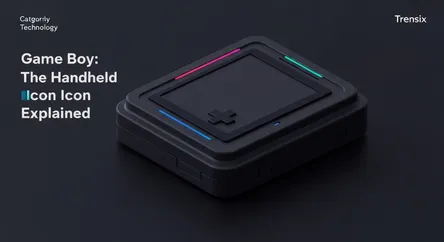Technology
Game Boy: The Handheld Icon Explained

Discover the Nintendo Game Boy, the iconic handheld console that revolutionized portable gaming and created a cultural phenomenon in the 90s.
What is it?
The Game Boy is an 8-bit handheld video game console developed and manufactured by Nintendo. Released in 1989, it revolutionized the gaming industry by making high-quality gaming portable. Featuring a distinctive gray design, a directional pad, A and B buttons, and a monochrome dot-matrix screen, it was famously bundled with the puzzle game Tetris. Its durability, simple design, and extensive library of games, including titles like Pokémon and The Legend of Zelda: Link's Awakening, made it a global success, selling over 118 million units worldwide.
Why is it trending?
Nostalgia for the 90s has fueled a massive resurgence in retro gaming, placing the Game Boy back in the spotlight. A vibrant community of collectors and modders keeps the device alive, upgrading original consoles with modern features like backlit IPS screens and rechargeable batteries. Furthermore, the high prices for sealed games and rare editions have made it a hot item in the collectibles market. Its iconic status continues to influence new hardware, like the Analogue Pocket, which plays original Game Boy cartridges on a modern high-resolution display.
How does it affect people?
The Game Boy's impact is profound, representing a powerful symbol of childhood for an entire generation. It defined the concept of gaming on the go, allowing people to play anywhere, from car rides to school playgrounds. The inclusion of the Link Cable for multiplayer games like Tetris and Pokémon fostered social interaction and friendly competition. Its legacy is cemented in gaming history, having paved the way for all subsequent handheld consoles and demonstrating the massive market potential for portable entertainment. It remains a cherished piece of technological history.